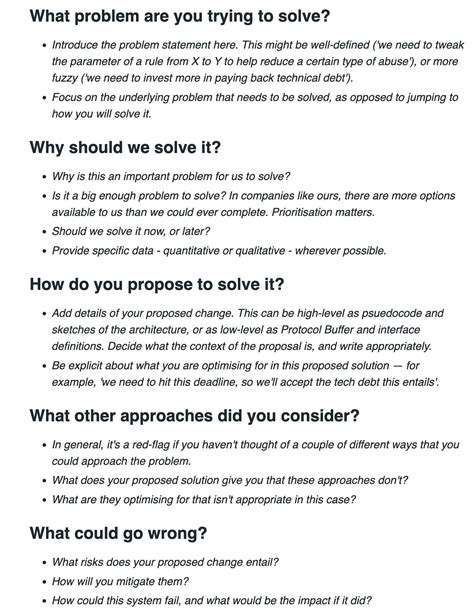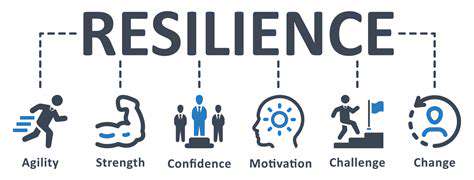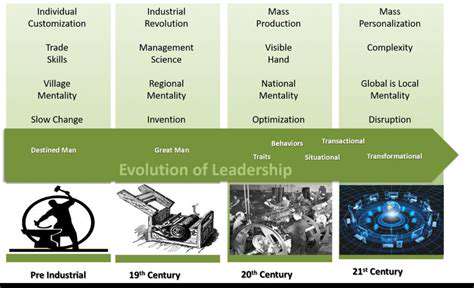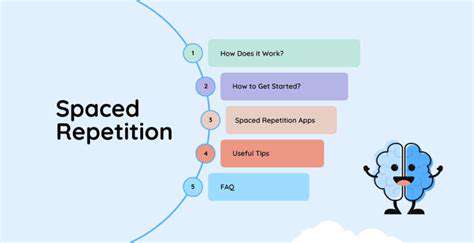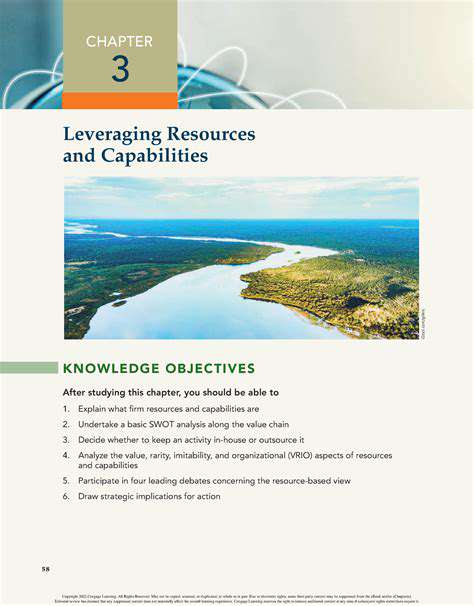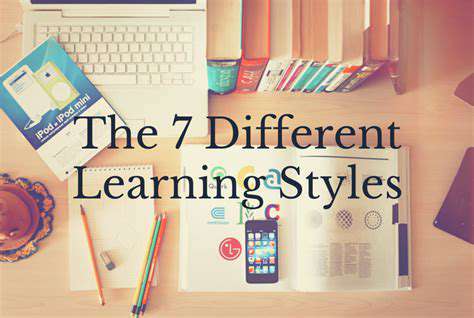Guide to Taking Better Notes in Class
Choosing the Right Note-Taking Method for You
Understanding Your Learning Style
A crucial first step in selecting the perfect note-taking method is understanding your individual learning style. Are you a visual learner, absorbing information best through diagrams and charts? Or perhaps you're an auditory learner, who thrives on lectures and discussions? Knowing whether you process information best through seeing, hearing, or doing can significantly impact your note-taking effectiveness. Identifying your learning style will help you choose a method that complements your strengths and allows you to retain information more efficiently. This self-awareness is a key component of successful note-taking and ultimately, better learning.
Different learning styles often require different approaches. For example, a kinesthetic learner might benefit from incorporating hands-on activities or creating physical models alongside their notes. Understanding your learning style is not about pigeonholing yourself, but rather about recognizing patterns in how you best absorb and process information. This awareness can be a powerful tool for optimizing your study habits and achieving academic success.
Evaluating Different Note-Taking Methods
Once you've identified your learning style, explore various note-taking methods. Traditional methods like linear note-taking, using a pen and paper, can be highly effective for some. Others might prefer digital note-taking applications, allowing for greater flexibility in organization, highlighting, and multimedia integration. Consider the advantages and disadvantages of each method. For example, linear note-taking might be more structured, but digital tools can offer greater visual organization and searchability.
Don't be afraid to experiment with different approaches. Try taking notes in different formats, such as mind maps, outlines, or Cornell notes. Each method has its unique strengths and weaknesses, and finding the best fit for you may involve some trial and error. The key is to identify which tools, structures, and approaches help you process and remember information most effectively, leading to a more comprehensive understanding.
Considering Your Course Content and Professor's Style
The subject matter and your professor's teaching style play a significant role in choosing the right note-taking method. A lecture-heavy course might benefit from a structured method like linear note-taking, allowing you to capture key details. However, if the course involves a lot of visual aids or complex concepts, a method that allows for visual representation, like mind mapping, could be more effective. Understanding how your professor delivers the material will help you tailor your note-taking strategy accordingly.
Adaptability is key. If a professor provides handouts or slides, you might want to focus on supplementing those materials with notes, rather than trying to capture everything verbatim. This will ensure that you're focusing on the most important information and not getting bogged down in unnecessary detail. This adaptable approach is vital for efficiently processing a wide range of information in diverse learning environments.
Balancing Efficiency and Comprehension
The ideal note-taking method is one that allows you to capture information efficiently while also promoting deep comprehension. A system that's too simplistic might leave out crucial details, while one that's overly complex can be overwhelming and lead to information overload. Find a balance that works for you. This balance involves finding a system that allows you to quickly jot down key points while also encouraging active engagement with the material.
Ultimately, the most effective note-taking strategy is one that allows you to synthesize information and connect concepts. This process of linking new ideas to existing knowledge will significantly enhance your understanding and retention. Therefore, an approach that encourages active recall and thoughtful processing, alongside efficient note-taking, is the most effective method for long-term learning and academic success.
Mastering the Art of Active Listening
Understanding the Importance of Active Listening
Active listening is a crucial skill for taking effective notes in class. It's more than just passively hearing the instructor; it's a conscious effort to fully understand and process the information being presented. This involves focusing on the speaker's words, body language, and tone of voice, and actively seeking to comprehend the message's meaning, not just the words themselves. By actively listening, you'll be better equipped to identify key concepts, grasp the instructor's overall points, and retain the information for a deeper understanding.
When you actively listen, you're not just hearing; you're engaging with the material on a deeper level. This engagement fosters a more meaningful learning experience, allowing you to absorb information more effectively and connect it to existing knowledge. This active engagement also helps you to identify areas where you need clarification, which will prove invaluable in your note-taking process.
Cultivating Focus and Minimizing Distractions
A critical component of active listening is maintaining focus. This requires creating a conducive learning environment by minimizing distractions. Put away your phone, close unnecessary tabs on your computer, and find a quiet space where you can concentrate without interruption. Creating a dedicated study space can help train your brain to associate that location with focused learning.
Recognizing and managing internal distractions is equally important. If your mind starts wandering, gently redirect your attention back to the speaker. This practice, while challenging initially, will improve your ability to stay present and engaged, improving your listening skills overall.
Paying Attention to Nonverbal Cues
Active listening extends beyond just the spoken words. Paying close attention to nonverbal cues, such as the instructor's body language, facial expressions, and tone of voice, can provide valuable insights into their message. These cues often reveal the emphasis they place on certain points, their enthusiasm about a topic, or even subtle hints about upcoming concepts. Recognizing these nonverbal cues can help you anticipate what's coming next and take more comprehensive notes.
For instance, if your instructor leans forward while discussing a particular concept, it might signify that this is a particularly important point. Similarly, a change in tone of voice could indicate a shift in the topic or a key distinction between different ideas. By observing these cues, you can supplement your understanding of the lecture and make your note-taking more accurate and comprehensive.
Connecting New Information to Existing Knowledge
To truly master the art of active listening, connect new information to your existing knowledge base. Relate the concepts presented in class to previous lessons, personal experiences, or real-world examples. This process of connecting new information to existing knowledge strengthens understanding and memory. By creating these connections, you create a more robust and lasting understanding of the material, not just a collection of isolated facts.
As you listen, actively look for opportunities to make these connections. This active engagement will make the material more memorable and applicable to diverse situations. This process of synthesis and application will greatly improve your ability to recall and apply the information in the future.
Optimizing Your Note-Taking Environment
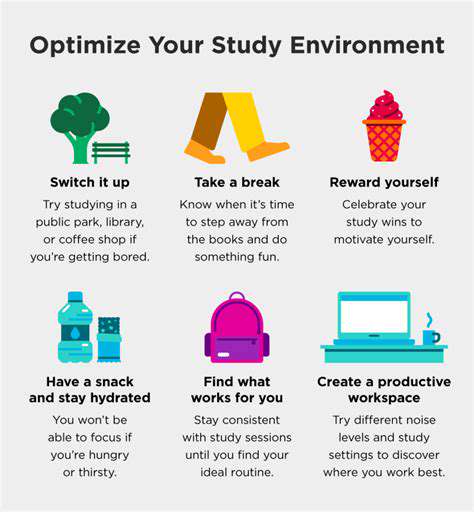
Choosing the Right Tools
Selecting the right note-taking tools is crucial for optimizing your environment. Consider the type of notes you typically take, the format you prefer (digital or physical), and the features you need. A well-chosen tool can significantly impact your productivity and organization. For instance, a digital note-taking app with robust search capabilities can be invaluable for quickly finding information later. Physical notebooks, on the other hand, can offer a more tactile and focused note-taking experience for some users. Experiment with different options to discover what works best for you.
Beyond the basic tool selection, think about the specific features that will enhance your note-taking experience. Integration with other apps, such as calendar or task management tools, can be a game-changer. Having all your information in one place can streamline your workflow, reducing the time spent searching and organizing. Consider the ease of note-sharing and collaboration if you work in a team. These factors can contribute significantly to the overall effectiveness of your note-taking process.
Creating a Conducive Environment
A conducive environment plays a significant role in optimizing your note-taking experience. A quiet workspace free from distractions allows for focused note-taking and better comprehension of the material. Minimizing interruptions, such as notifications or social media, ensures that you can fully immerse yourself in the task at hand and take detailed and accurate notes.
Ergonomics are equally important. Ensure that your seating, lighting, and desk setup promote comfort and minimize strain. A well-designed workspace can reduce physical discomfort and fatigue, which can have a positive impact on your concentration and note-taking quality. A comfortable posture and good lighting are crucial for maintaining focus and preventing eye strain throughout your note-taking session.
Beyond the physical space, consider the mental environment. A positive mindset and a clear intention to take notes effectively can significantly improve the quality and usefulness of the notes. Cultivating a mindset of active listening and engagement can transform your note-taking from a passive activity to a dynamic learning experience. Creating a mental space conducive to absorbing information will result in more insightful and meaningful notes.
Finally, dedicate a specific space for note-taking. This could be a dedicated corner, a particular desk, or even a specific digital folder. This helps to establish clear boundaries and signals to your brain that it's time to focus on note-taking. This dedicated space fosters a mental association with note-taking, making it easier to transition into the process when needed.
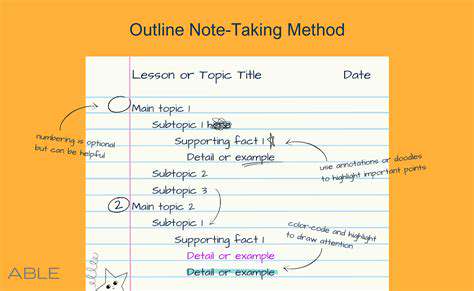
Read more about Guide to Taking Better Notes in Class
Hot Recommendations
- How to Stay Productive While Working Remotely
- Tips for Managing Conflict with Coworkers
- Entrance & Certification Exams (升学考试)
- How to Improve Your Storytelling Skills (Speaking)
- How to Find Profitable Side Hustles
- Tips for Preparing for the TOEFL iBT Home Edition
- Guide to Switching Careers from [Industry A] to [Industry B]
- How to Run an Effective Hybrid Meeting
- Tips for Marketing Your Side Hustle on Instagram
